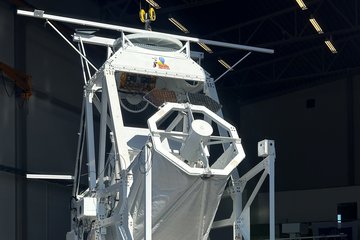All genres
441.
Poster
Galactic Cosmic Rays as a source for Saturn Inner Radiation Belt. MAPS workshop, Göttingen, Germany (2014)
442.
Poster
Mapping the flow of energetic particles in Titan's exobase. European Planetary Science Congress EPSC, Cascais, Portugal (2014)
443.
Poster
Tracing of energetic particles in the vicinity of Titan. European Geosciences Union General Assembly, Vienna, Austria (2014)
444.
Poster
Mapping the flow of energetic particles in Titan's exobase. Cassini MAPS workshop, Göttingen, Germany (2014)
445.
Poster
Mapping the flow of energetic particles in Titan's exobase. 10 years of Cassini-Huygens in the Saturnian system, London, UK (2014)
446.
Thesis - PhD
Drei-dimensionale Richtungsverteilungen und relative Häufigkeiten energiereicher Ionen in der Magnetosphäre des Jupiter. Dissertation, Technische Universität Braunschweig (1994)
447.
Working Paper
Galileo/EPD user guide. (2020)
448.
Working Paper
The in-situ exploration of Jupiter's radiation belts: A White Paper submitted in response to ESA’s Voyage 2050 Call. (2020)
449.
Report
Jupiter radiation environment and effects tools- TN2: Part A- Trapped radiation model development. ONERA The French Aerospace Lab, Toulouse, France (2009)











